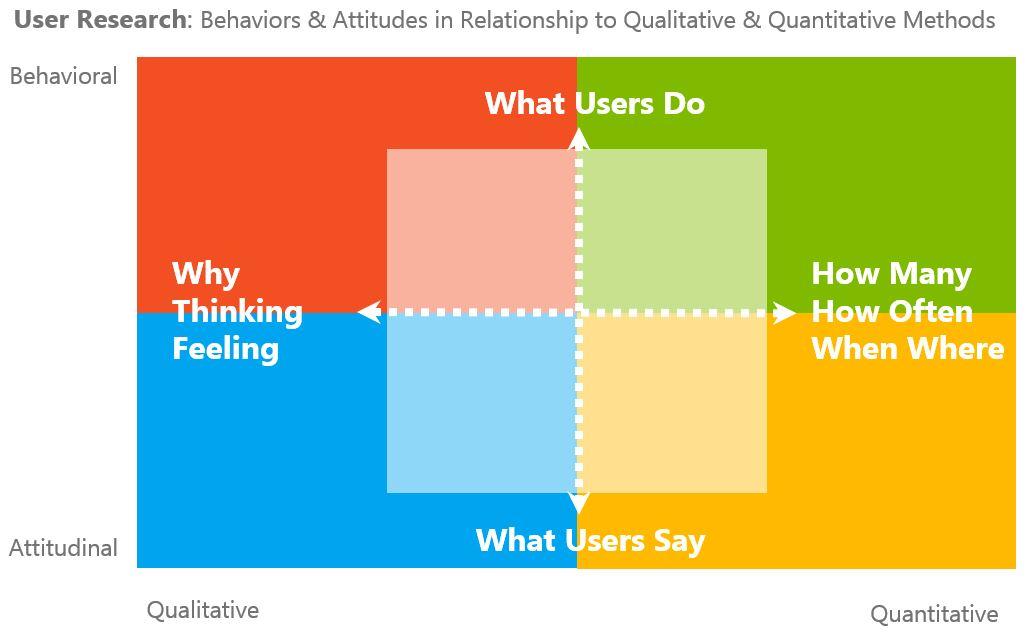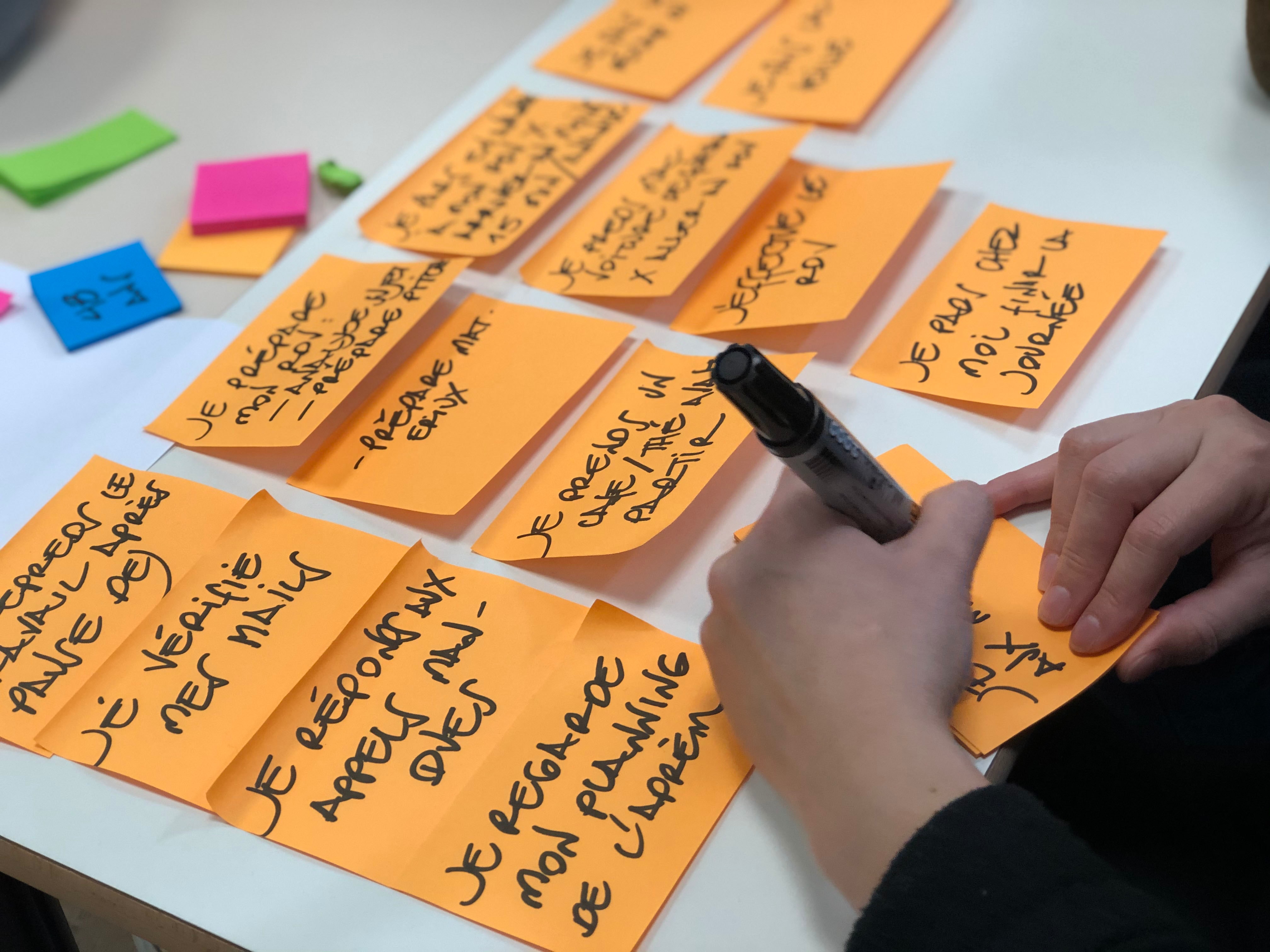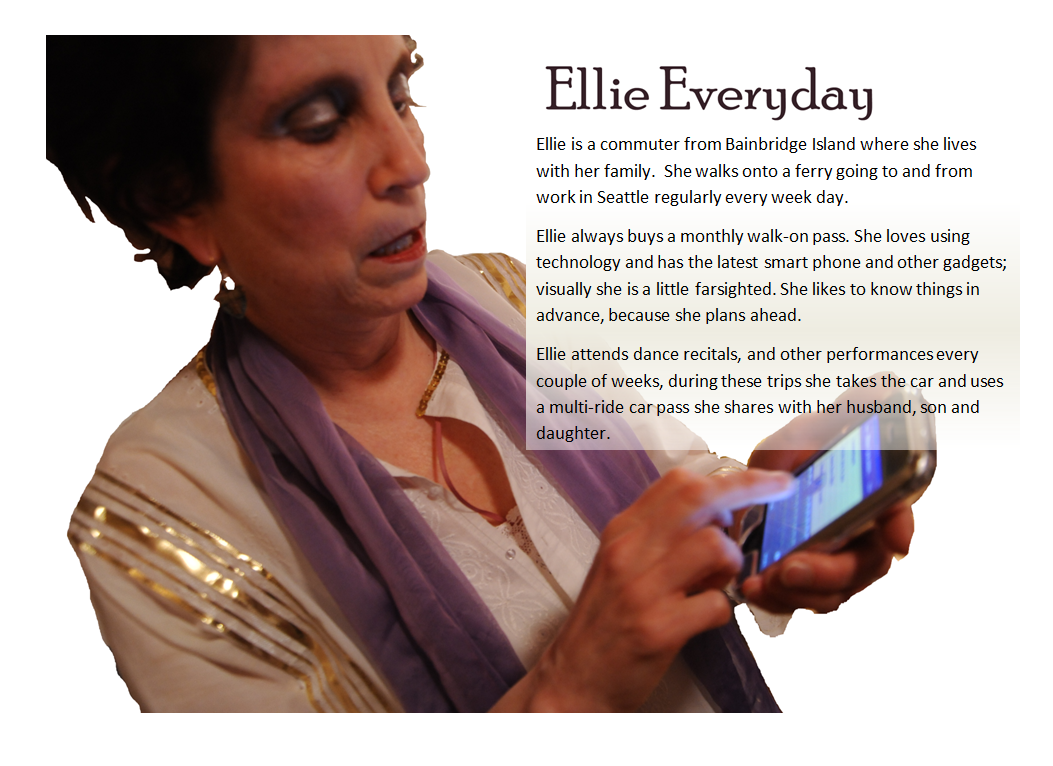Who are users and how can you find out what they need? You can conduct user research.
The two most basic types of user research are qualitative and quantatative.
There are about 20 basic methods of user research that generally fall into Qualitative vs Quantitative dimensions, and attitudinal or behavioral.
Qualitative methods gather research about behaviors / attitudes directly – like user Interviews for example. They answer what the users are thinking and doing.
Quantitative methods gather research through indirect methods, analysis & surveys – like Clickstream Analysis or A/B Testing.

Below are 14 common types of user research.
Testing provides differences between what people say they want and what they actually choose when presented with a choice –
Qualitative research techniques are better at why or how to fix problems, and feeling level issues,
while Quantitative research is better at how many
and how much – analysis boils down to math.
1. Usability-Lab Studies
What is lab usability testing? Lab usability tests measure a user's ability to complete tasks. In a typical usability test, a user attempts to complete a task or set of tasks using a web site (or software or a product). A typical study will have eight to twelve participants who participate in the test.
2. Ethnographic Field Studies
To observe people in their natural environments in order to understand their needs. Ethnography is a type of field study, and it's differentiated from other types of field studies in that, at its roots, it's based on the researcher living, working, and immersing in the environment they're studying.
3. Participatory Design
Participatory design is a product design method to design digital services. It involves stakeholders, end-users and the team into the design process in order to help ensure that the end-product meets the needs of users. It is iterative.
4. Focus Groups
In interactive systems development, the proper role of focus groups is not to assess interaction styles or design usability, but to discover what users want from the system.
5. Interviews
Interviewing users, stakeholders the main method I use in gathering requirements for UX design. There are different types of questions to ask, open and closed, those that do not lead the users are the most useful.
6. Usability Benchmarking
Benchmark studies are similar to summative usability studies in that they test usability of a functioning product, application, or website. The goal is to collect data along specific measures such as error rate, number of clicks, success/failure, and satisfaction ratings.
7. Moderated Remote Usability Studies
In remote moderated testing, researchers (aka moderators) are in a different location than their test participants, but both parties are on a web or conference call and are sharing screens. Moderators can see what participants are doing, and they can both communicate with each other in real time.
8. Concept Testing
Concept testing (distinguished from pre-test markets and test markets which may be used at a later stage of product development research) is the process of using surveys (and sometimes qualitative methods) to evaluate consumer acceptance of a new product idea prior to the introduction of a product to the market.
Concept testing is when you ask people their thoughts on a concept or idea. It's a valuable tool to determining product-market fit. By asking participants what they think about your concept, you'll mitigate the risk of releasing a product that falls below customer expectations.
9. Desirability Studies
Desirability studies allow you to ensure that your visuals match your brand goals and evoke the desired emotional response. There're several variations but the most common is that you show participants variations of visual designs and ask them to select which words best describe each
Generally, we take a key screen whose structure and functionality we have finalized—for example, a layout for a home page or a dashboard page—and explore three alternatives for visual style. These three alternative visual designs, or comps, include the same content, but reflect different choices for color palette and imagery.
The idea is to present business owners and stakeholders with different visual design options from which they can choose. Sometimes there is a clear favorite among stakeholders or an option that makes the most sense from a brand perspective.
However, there can often be disagreements among the members of a project team on which design direction we should choose. If we’ve done our job right, there are rationales for our various design decisions in the different comps, but even so, there may be disagreement about which rationale is most appropriate for the situation.
10. Card Sorting
Uncover Users' mental models for information architecture In an open card sort, users are free to assign whatever names they want to the groups they've created with the cards in the stack.
Closed card sorting is a variation where users are given a predetermined set of category names, and they are asked to organize the individual cards into these predetermined categories. Usually the cards used are index cards or sticky notes.
11. Customer Feedback
Open or closed questions provided by users, either in person, or via a feedback link/button, form or email, text message.
12. Clickstream Analysis
On a Web site, clickstream analysis (also called clickstream analytics) is the process of collecting, analyzing and reporting aggregate data about which pages a website visitor visits -- and in what order. The path the visitor takes though a website is called the clickstream
13. A/B Testing (aka “multivariate testing”)
A/B testing is a way to compare two versions of a single variable, typically by testing a subject's response to variant A against variant B, and determining which of the two variants is more effective.
Multivariate testing is a technique for testing a hypothesis in which multiple variables are modified. The goal of multivariate testing is to determine which combination of variations performs the best out of all of the possible combinations. Websites and mobile apps are made of combinations of changeable elements.
14. Email Surveys (or via Survey Monkey)
Surveys or polling conducted remotely via email or using tools such as Survey Monkey.
Create a presentation of what we have learned and how specifically UI/UX standards can be applied to this mobile software
- Present findings
- Decide on next steps…
User Roles (profile) and
Personas to create walkthrough scenarios
- Who are the users?
- What scenarios (processes and actions under which conditions) do they need and want?
- Situational awareness
- Create role-based personas of system users to fulfill their needs…
For example, for a software company, a support app may have the following stakeholders grouped together based on their similar needs:

Scenarios describe user personas “dream state,” which designers use to inform to-be-built features.


 Below are 14 common types of user research.
Below are 14 common types of user research.







